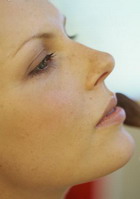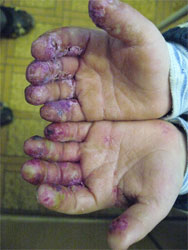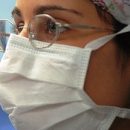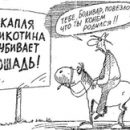PODERMIA is a group of sprinkled skin diseases whose development cause pathogenic microorganisms. The leading role in the occurrence of the disease belongs to «entrance doors» and a decrease in immunity.
Content
The concept of pyodermia
PIODERMIA - a group of metal skin diseases caused by staphylococcal, streptococci, less often with a blue rod, intestinal wand and other microorganisms.
A large role in the development of pyodermia is played by the presence of an entrance gate of infection and a decrease in the protective forces of the body - immunity. The source of pathogenic microorganisms can be a bacterial flora of the skin, upper respiratory tract, as well as the environment.
The skin of staphylococci is more often in the mouth of the hair follicles and rods of the sebaceous glands. In the upper respiratory tract, including in the oral cavity, pathogenic staphylococci are found nearly half of healthy people. Pathogenic streptococci is revealed mainly in the cavity of the nose and mouth about 10% of healthy people, in children in collectives (kindergartens, nursery, hospitals) - up to 70%. In the skin of staphylococci and streptococci penetrate in places microtrav.
Causes of development of pyodermia
The leading role in the occurrence of pyodermia belongs to the oppression of all parts of immunity (cellular and humoral). Sugar diabetes also contributes to the development of pyodermia (the increase in the maintenance of sugar in the skin creates a good nourishing environment for pathogens). The predisposing factors include:
- Supercooling and overheating of the body
- malnutrition
- overwork
- chronic intoxication (for example, alcoholism)
- Diseases of the gastrointestinal tract and liver
Forms pyodermia
Depending on the causative agent, staphylococcal, streptococcal and mixed piederms are isolated. The depth of lesion of the skin is distinguished by surface and deep piederma. For the flow of pyodermia can be sharp and chronic. In the same patient, a combination of surface and deep peyoderma is possible, while in the same stages the disease may have an acute course, on others - chronic or recurrent. Piedermia can be a secondary process complicating other skin diseases, especially accompanied by semat.
The main symptoms of piedermia
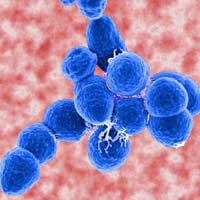 The manifestations of pyodermia are diverse and largely depend on the nature of the pathogen, the individual properties of the body, its reactivity (primarily on the state of the immune system), the influence of the predisposing factors of the external environment, the severity and localization of the pathological process, as well as the duration of the disease.
The manifestations of pyodermia are diverse and largely depend on the nature of the pathogen, the individual properties of the body, its reactivity (primarily on the state of the immune system), the influence of the predisposing factors of the external environment, the severity and localization of the pathological process, as well as the duration of the disease.
In staphylococcal pyoderms, the process is developing mainly in the region of hair follicles, in sebaceous and sweat glands. Forming guns have a conical or semi-shaped shape, the walls of their thick, tense, the center of the gun is often permeated with hair released by pussy - thick, yellow-green. Children, for example, with epidemic bubble of newborns, there may be surface bubbles that are not associated with hair follicles, fasteners and sweat glands.
Streptococcal piederma meets more often in women and children. The primary element is fluxten - bubble with a sluggish thin tire and serous content, which quickly becomes serous-purulent, then purulent. Flicen is within the epidermis (surface layer of the skin), it is characteristic of peripheral growth, and if it does not destroy it, as it happens when it is transformed into an ecctime, the erosion formed in its place quickly heals, in the future there remains temporary hyperpigmentation.
With surface forms of bubbles are located within the epidermis, after the resolution, they do not leave the resistant trace. With deep pieoders, bubbles are found in the epidermis, the dermis and often in the subcutaneous tissue, after their healing, scars and scar modified fabric are formed. With prolonged flow of deep pyoderms, pyoallergids may appear - secondary allergic lesions in the form of various rashes (for example, Lihenoid, erythematous, erytemmatomic, eczematous rash).



